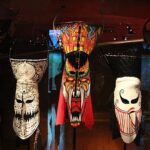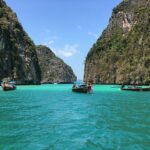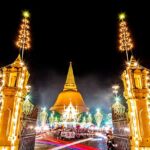Nestled in Northern Thailand, Baan Dam (Black House) is Thawan Duchanee’s testament to unique art, diverging from typical Thai scenes.
Born in 1939, Thawan Duchanee, a renowned Thai artist, spent over five decades creating a vast collection of 40 buildings. Initially his residence, the compound evolved into a captivating museum and art space.
Stepping into Baan Dam, the imposing hall adorned with buffalo horns and skeletal remains greets you. The exterior blends Thai tradition with modern design, setting the tone inside. Thawan Duchanee’s fascination with the macabre permeates every corner.
The Black House is not a single structure but rather a collection of interconnected buildings, each housing a distinct thematic display. The artist’s vast collection includes sculptures, paintings, and installations that explore themes of life, death, and the human condition. Real and mythical animals recur in Thawan’s work, with many pieces featuring taxidermied creatures in various states of repose.
Dark wood dominates Baan Dam. Intricate carvings create an immersive experience, blurring art and architecture. Juxtaposing tones deepen the intrigue.
Wander through themed rooms like the “Hell Garden” and the contrasting “White Temple,” each exploring Buddhist concepts with evocative sculptures.
While Baan Dam Chiang Rai has sparked controversy for its unconventional and sometimes provocative displays, it undeniably stands as a testament to Thawan Duchanee’s unbridled creativity. The museum reflects on tradition and modernity, challenging preconceived notions of Thai art, sparking thought and contemplation.
In conclusion, Baan Dam Chiang Rai is not merely an art museum; it is an immersive journey into the mind of a visionary artist. Whether you are an art enthusiast seeking a unique experience or a traveler looking to explore the unconventional side of Thailand’s cultural landscape, Baan Dam Chiang Rai promises an unforgettable and thought-provoking adventure into the depths of artistic expression.
Additionally, let’s continue to Huai Pla Kang Temple , which is in the same area of the province.











